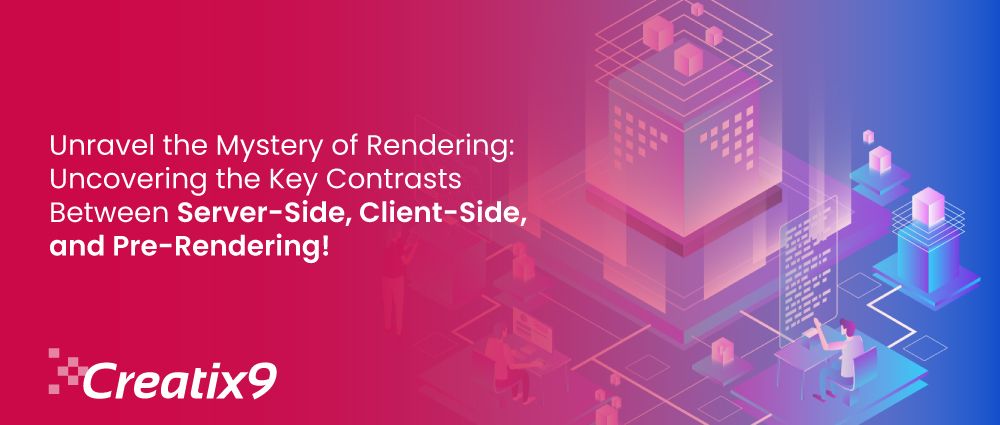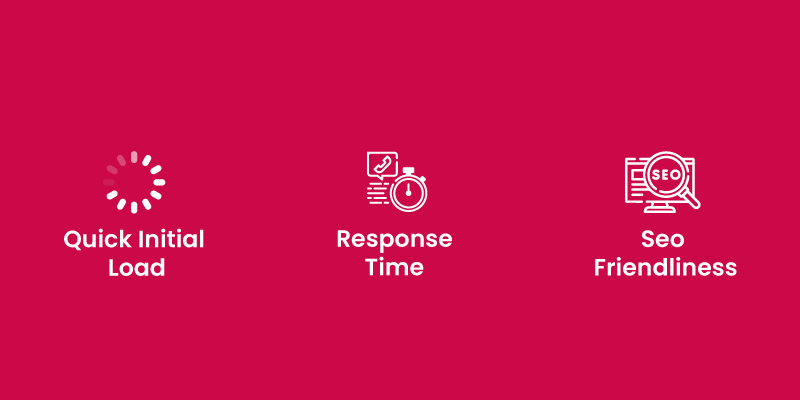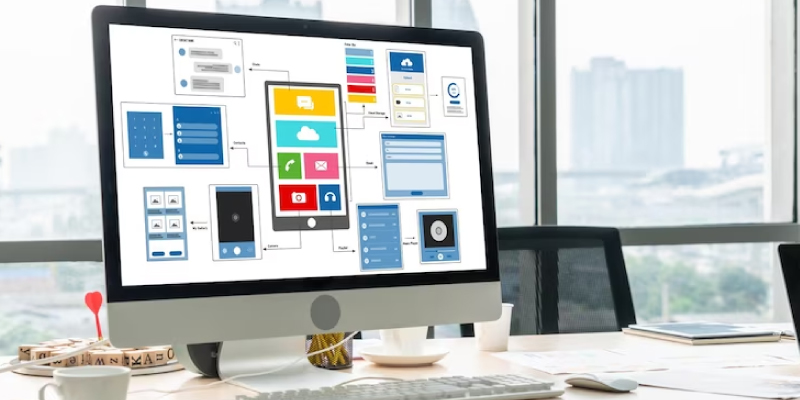
Software engineers/developers must make many choices when making a web-based application, like which server configuration is best, how the web app will be built, and which tools and platforms to use.
Users can select either client-side rendering (CSR) or server-side rendering (SSR) for the rendering process when using the app. Many business owners would instead not get too deep into rendering and let their development team choose.
But to avoid many problems after your app is out, knowing which type of rendering works best for it is essential. Some of these problems are bad user experiences, lousy app speed, and bad SEO results. Also, if you choose the wrong output type, you may have to change it in the future, which will cost you time and money.
Before we understand how client-side rendering and server-side rendering are different, we need to discuss a few basic ideas. Creatix9 US, with its top-notch CRM system and web development services, will talk in-depth about rendering and answer the following questions:
- How do you decide whether to render on the client or server side?
- How do client-side rendering and server-side rendering differ?
- What does pre-rendering mean?
- What are the benefits of each rendering type?
- What kind of rendering should you use for your project?
Client-Side Versus Server-Side Rendering

Both client-side and server-side rendering accomplish the same task, but they use different methods to do so.
During server-side rendering, the code for the app is taken care of on the server. The back end makes the page view and sends it to the front end, the client side, or just the computer. How does server-side rendering actually work? Here are the steps that show how it works:
- A URL is typed into the browser’s address bar.
- To obtain server data, a request is sent to the specified URL.
- When the front end makes a request, the server builds an HTML file with the necessary information and styling.
- In return, the server sends the HTML file to the browser.
- The computer runs the HTML code, which then shows the page.
During client-side rendering, the app’s code is sent to the user’s computer, which is processed and turned into pages you can see and interact with.
Here’s what happens when rendering happens on the client side:
- A URL is typed into the address bar of a computer.
- The given URL sends a data request to the server.
- The server gets information from a database and makes an answer in the format asked for, such as JSON.
- The server gives the client the information it asked for.
- The browser shows the page by putting the info into the HTML code. The user’s browser shows the page by running JavaScript code saved on the client side.
Both renderings on the client side and on the server side have their own benefits that can significantly enhance a website or application. Let’s chat about them more deeply.
Here are the SSR Advantages

Here are some reasons why server-side rendering is a good choice for web applications:
- Quick Initial Load: When a page is requested with SSR, the server sends back an HTML file that has been created. The browser doesn’t have to read huge JavaScript files to show the content. Instead, the browser can display the content in a matter of milliseconds.
- SEO-friendliness:Websites must be “readable” by search engine bots to rank well. They are easy to read when all the information is given quickly, ideally as text, which is how SSR sites look in the browser.
- Response Time Effects The Site Rating:Since it takes longer for information to load on a client-rendered site, a robot can leave the page before the answer is ready. The speed with which search engine bots can read the information on server-rendered websites is one reason they rank higher.
Here are the CSR Advantages

Here are some reasons why client-side rendering is a good choice for web applications:
- Minimum Server Traffic:As a unique feature of client-side rendering, the website’s content is produced in the browser means that the server doesn’t have to do nearly as much work.
- After Initial Page Loading, Quick Rendering Speed: Only the new info is shown when a user changes pages in a CSR application. You can see this with one of the one-page computer apps you probably use daily. Click the Compose button once Gmail has opened. You’ll notice that a new modal window immediately pops up, but the rest of the page stays the same.
Want to improve how you manage your business and elevate your online presence. Approach us and get us the most powerful web and CMS management services. Take the initial step towards success and growth today!
Pre-Rendering: What It Is And How It Operates
Pre-rendering is not a different type of rendering, but it is often used with CSR to do two things:
Offers The Quick Server Response
With pre-rendering, the server gives it to them immediately when a person asks for a page. Most of the time, the answer is a basic page skeleton or a few blocks of the page layout that can be seen immediately. The person stays on the page as it continues to load.
Pre-rendering only sends some of the information at a time. Users have to wait before they can see the information they came for. To keep your bounce rate from increasing, ensure all the information loads in a few milliseconds or less.
Growth In SEO Rankings
Software workers use pre-rendering on their projects because they need to make SEO-friendly websites or apps. During pre-rendering, the first things done are the metadata, meta descriptions, layout of the web page, and other static parts of the website. So, Googlebot can rank the page better by instantly analyzing data already rendered.
Now that you know two ways to show pages, let’s discuss when to use each one and which will work best for your project.
Server-Side Vs. Client-Side Rendering And When To Use Them
Most of the time, a project’s technical leader or team head decides on the rendering style. The decision should be made based on what the customer wants, what the company wants, and what the software requirements specification for the app says.
Let’s look at how software writers decide when to use client- or server-side rendering.
What Is The Appropriate Time You Go For Server-Side Rendering

We’ve already discussed how SEO is the main benefit of server-side rendering. SSR is the best choice for web apps that must do well in search engine results.
Online marketplaces and e-learning sites can benefit from this type of rendering because they have to fight for better positions in Google results to get more customers.
What Is The Appropriate Time You Can go For Client-side Rendering

Usually, client-side rendering is used for live web apps like social networks and online chat rooms. Client-side rendering is the best way to do this since information in these apps constantly changes and needs to be shown to users as soon as it’s changed.
When making an app for your business, you don’t need server-side renderings like a dashboard for data or an admin panel for your internal app. SEO isn’t necessary. Focusing on the user experience and using client-side rendering is better.
When You Can Integrate Server-Side And Client-Side Rendering
Combining SSR and CSR into one website or set of pages is possible. For example, because product description pages in an online store are static, they can be rendered on the server.SSR is ideal because it makes indexing your content easier for search engines. For a better user experience, you can use CRS for pages that don’t need to be put in search results, such as those related to user accounts.
Also, you can use both rendering approaches on the same page. For example, you could render the static text of a blog post on the server and the dynamic content of pop-up windows on the client.
When You Can Use Pre-rendering
Pre-rendering is a method that can speed up the process of making web pages that are dynamic and can be seen. It also helps websites with browser views on clients do better in SEO.
Many people use Facebook as a social media platform that incorporates pre-rendering technology in its application. Facebook developers use pre-rendered UI skeletons to make their apps faster for users. These skeletons appear instantly when the app is opened, giving users a quick response. Afterward, JavaScript is executed to show the accurate content.
Conclusion
In the early steps of making a new product, you and your team should choose the type of rendering that works best for your application. The choice of image can impact your app’s search ranking and user engagement on your website.
Even though you can use all server-side rendering, client-side rendering, and pre-rendering in a project, it’s essential to choose your strategy with the help of a technical lead who can help you find the best answer for your app.
Are you trying to find ways to simplify your company’s processes? Are you seeking ways to expand your online reach and lure better customers? You’ve reached a good spot. Our unique CRM system and web development services can help take your business to the next level. We understand the importance of this opportunity and want you to take advantage of it. Let’s take action today and see your company soar to new horizons.

